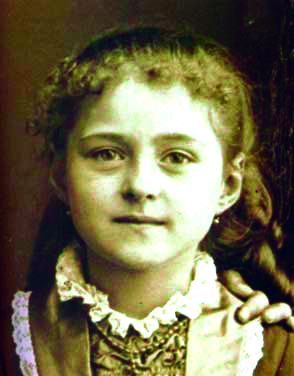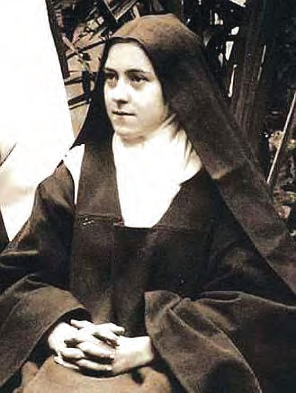The relics of St Therese of Lisieux
 The relics of St Therese of Lisieux and her parents St Louis and St Marie-Azelie (Zelie) will be taken through a number of dioceses early in 2020. Many people wonder why the Church persists in what seems to be a mediaeval piety, an archaic practice. Why tour the remains of saints and make them available for the veneration of the faithful? Is this an outdated superstition?
The relics of St Therese of Lisieux and her parents St Louis and St Marie-Azelie (Zelie) will be taken through a number of dioceses early in 2020. Many people wonder why the Church persists in what seems to be a mediaeval piety, an archaic practice. Why tour the remains of saints and make them available for the veneration of the faithful? Is this an outdated superstition?
Despite the scenes of intense religious devotion around relics, there is certainly nothing magical or talisman like about the relics of saints. Of themselves relics are not holy. It is more correct to say, they are the remains of a holy person, a saint, and on account of their connection to that holy person are revered.
In Australia we are used to caring for and respecting sacred sites. A place may be sacred for a number of reasons. It may be a place of spiritual significance to a people who identify with and are defined by that place; as is the case with many indigenous Australians. It may be a place where an important event took place and now is part of the national identity, such as Gallipoli. It may be a building in which over hundreds of years people have prayed and worshiped, such as a church or cathedral.
We all have souvenirs of people we have loved, insignificant items of little value, but to us they are treasured gems which move us to remember a loved one or an event. When the item attaches to a person it can bring to mind the attributes and goodness of the person. In some cases it can even encourage us to live according to higher values. The relics of saints fall into this category. Relics are physical remains which connect us with the goodness and holiness of the saint. They remind us of the saint and through the saint move us to live better lives.
The saints who are “visiting” Australia are a mother, a father and their daughter. St Louis and St Zelie are the only married couple to have been canonized, and they have a daughter who was called by Pope St Pius X, the greatest saint of the modern times. St Therese, who died in 1897, was a woman of precocious virtue and prayer. She says, “For me, prayer is a surge of the heart; it is a simple look turned toward heaven, it is a cry of recognition and of love, embracing both trial and joy.” She shows us that holiness is simple and hidden, it does not seek recognition but turning away from self to God, it makes within the human heart a place for Jesus.

As is the case with Jesus, holiness and goodness does not exist in a vacuum. It has a context. In Jesus’ case the context was the holy family. Extraordinary goodness does not exist in isolation. If you see a good child, you can generally presume that this goodness comes through the parents. Jesus was taught by Mary and St Joseph. St Therese is the daughter of holiness. The Church recognized that goodness is caught, and so investigated her parents, and found two saints.
These three saints show us the integrity of virtue and holiness. The path to holiness is the path of struggle and ordinary life. It is carried and lived with love, and dependence on God. They experienced the mercy of the Father and this mercy crafted the way they lived and loved. In this they are of great relevance for us. They have been where we are, and have together allowed God to perfect them. Being a family, the Martins prove that the family is the seed ground of holiness and goodness. We can learn from them.
Visit one of the churches which will host the relics. Pray and experience the saints. You will experience God and perhaps your life will change. As with a sacred site or souvenir, you can, through the saint, experience and connect with the holiness of God.
Published with thanks to Catholic Mission.
Itinerary: Archdiocese of Canberra and Goulburn
 Wednesday 25 March
Wednesday 25 March
8pm: Arrive St Peter and St Paul’s, Goulburn
Thursday 26 March
12 Noon Depart Goulburn, 1.30pm-6pm St Anthony’s Waniassa, 7pm-9pm St Monica’s, Evatt.
Friday 27 March
8am Depart St Monica’s, Evatt.
9-11am Merici College, Braddon, then pilgrimage to St Patrick’s, Braddon.
11.30-1pm St Patrick’s Braddon, 1.30-5pm, St Joseph’s, O’Connor,
5.30pm St Benedict’s Narrabundah for healing Mass and overnight vigil
Sat 28 March
8.30am Depart St Benedict’s, 9am-1pm Apostolic Nunciature, Red Hill
1.15pm Carmelite Monastery, Red Hill. The Carmelite Chapel will remain open for overnight prayer
Sunday 29 March
9am Carmelite Monastery Mass,
10.15am Depart Monastery
10.45am St Christopher’s Cathedral, Forrest 11am Mass
1.15pm depart St Christopher’s Cathedral, Forrest
1.30pm arrive St Peter Chanel’s church, Yarralumla, for veneration
4.30pm Relics arrive back at St Christopher’s Cathedral, Forrest
5.30pm Mass St Christopher’s Cathedral, Forrest
6.30pm Relics depart for St Patrick’s church, Bega
9pm Arrive at St Patrick’s church, Bega, for overnight stay
Monday 30 March
7am St Patrick’s church opens for veneration
9.15am Mass, St Patrick’s. Veneration continues after.
1pm Relics depart Bega
2pm Relics arrive St. Columba’s church Bemboka.
3pm Relics depart Bemboka for Cooma
4pm Arrive St Patrick’s church, Cooma, Welcome and veneration
6pm Mass St Patrick’s church, Cooma. Church secured at 7.30pm
Tuesday 31 March
8am Mass St Patrick’s Cooma
9am depart Cooma
12pm arrive St Patrick’s church, Gundagai
12.15pm Mass followed by veneration
5pm Benediction
6pm Relics depart for Albury NSW


